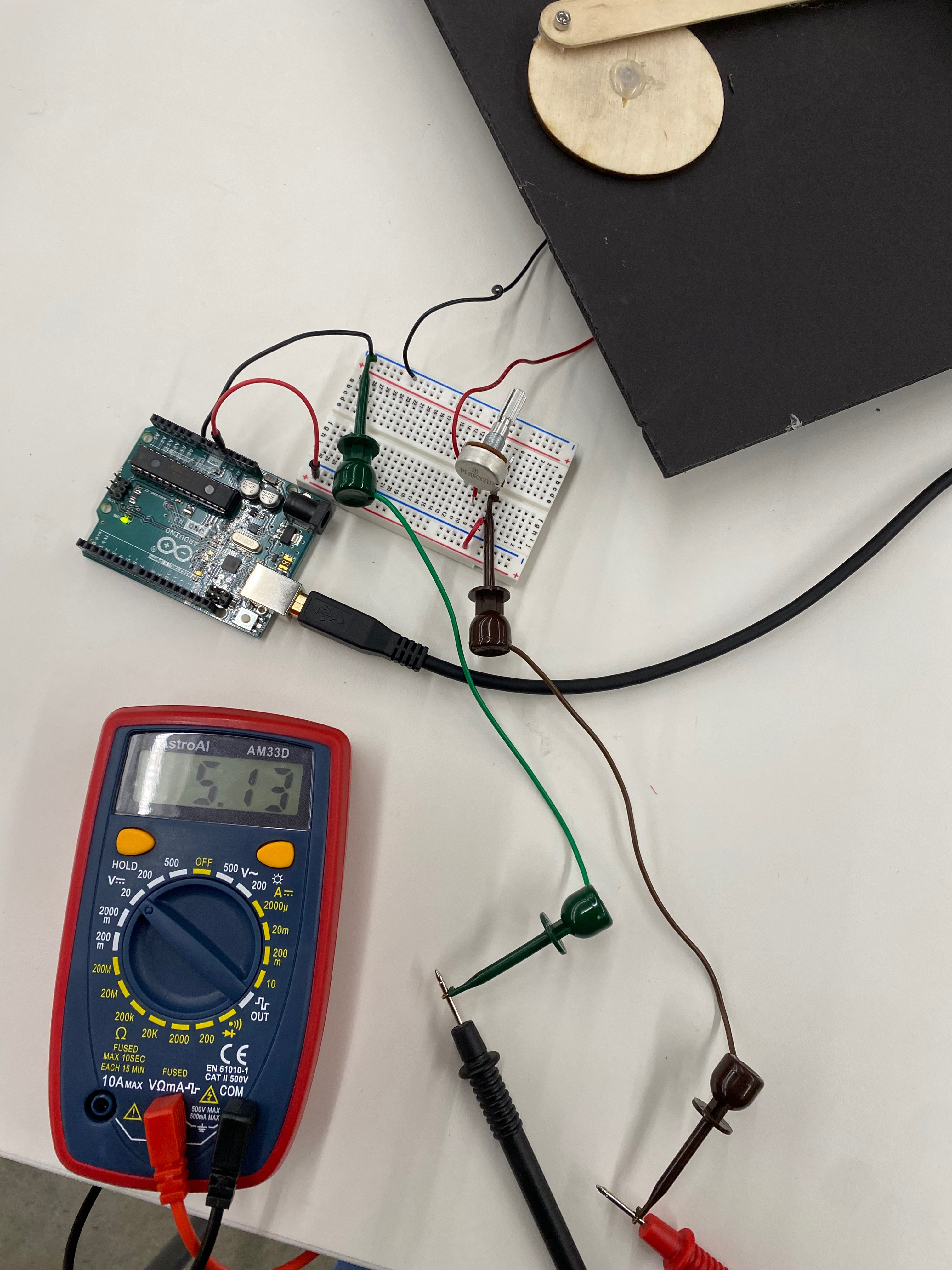Hands, hands, hands
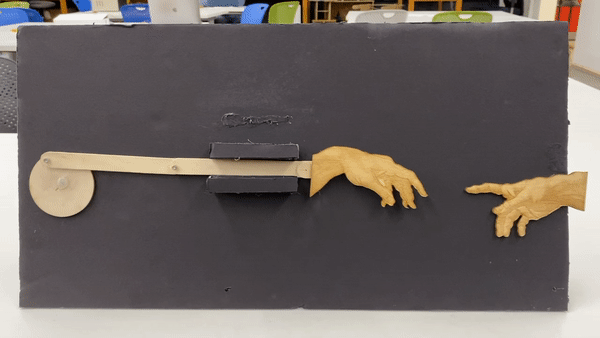
Materials
- Calipers
- Popsicle Sticks
- M3 screws and washers
- Fusion 360 Software
- Breadboard circuit
- Motor
- Potentiometer
- Hot glue (a lot of it)
Introduction
I've always really liked Michelangelo's Fresco on the Sistine Chapel, "The Creation of Adam." I found it interesting how their hands never quite touch, and for my kinetic sculpture, I figured we could all finally see their hands touch (sorry Michelangelo).
The Process
For this project, the only part I had to cut out / engrave using the laser cutter were the hands pictured. I designed the hands in Fusion 360, tracing a PNG of the hands using the spline and line tools. From here, I exported the file as a DXF, and turned the DXF file into an SVG file using an online converter, so I could then import the SVG file into InkScape. In InkScape, I overlayed the PNG photo over the red-lined SVG file made in Fusion, in order to use both the cut and engrave functions of the laser cutter.
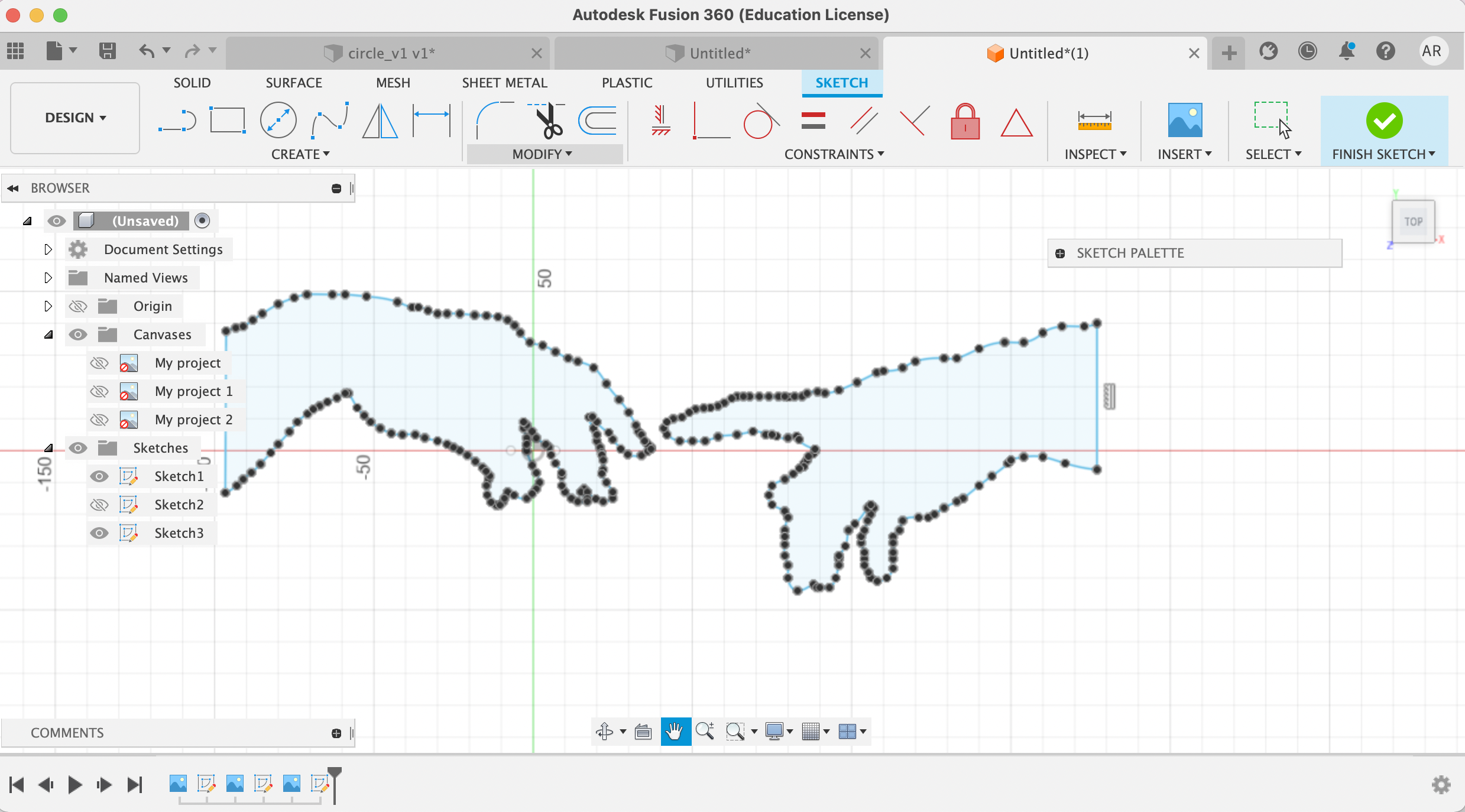
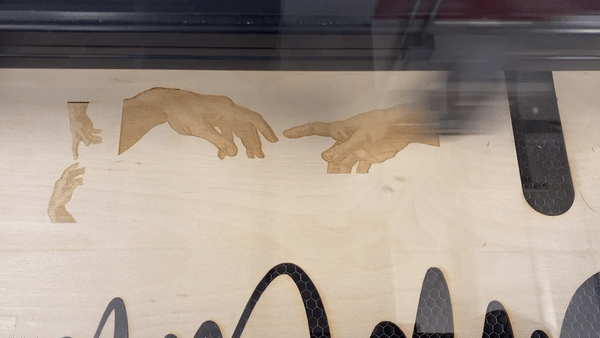
From here, I needed to convert rotational motion (from the motor) to linear motion (to make the hands move in and out), so opted to use a slider crank mechanism. I made the slider crank mechanism by creating a 70mm diameter cicle, and connecting it to an "arm" fashioned by popsicle sticks. I then drilled holes where I needed them, and put in M3 screws, washers, and nuts as necessary at the joints, to allow the joints to also rotate once the motor was in use.
See here a prototype I put together--before using the nicer materials above (:
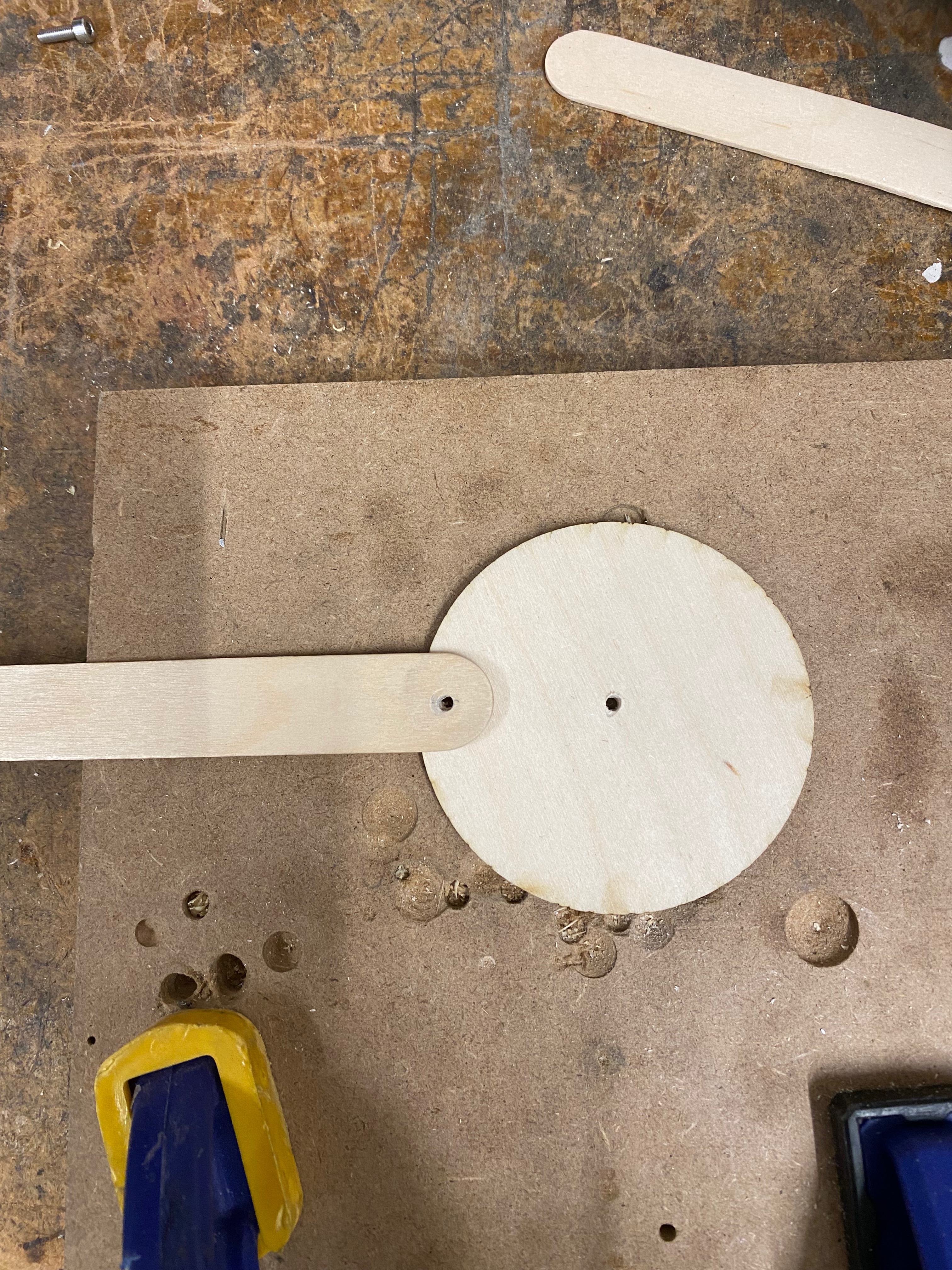
.gif)
The motor was linked up to a fairly simple circuit, using a potentiometer to toggle between 0 - 5 V (inclusive).
 copy.gif)
I then hot glued my contraption made from the nicer materials, along with the hands onto a black board, making the motor the axle of the circle. This worked great!
Multimeter Readings
I used a multimeter to measure the current going from the potentiometer to the motor, when the potentiometer was turned all the way up. I expected this to be ~5 V, and got 5.13 V. I measured that the current was 422 mA. From here, I use Ohm's Law to determine that 5.13 V / 422 mA = 12 Ω of resistance. Nice!
